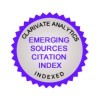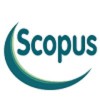Review
Research Article
Case Report
Aim & Scope
Duzce Medical Journal (Duzce Med J) is a peer-reviewed open-access periodical journal based on independent and unbiased double-blinded peer-reviewed principles, published three times a year, in April, August and December by the Duzce University Medical Faculty. Began its publication life in 1999, and all of its issues have been available electronically since 2005. The articles submitted are required to be unpublished and are not under review for publication elsewhere. The authors are responsible for their article. No submission, processing or publication charges are required from the authors.
In all fields of general medicine, editorial comment/discussion, invited review, original research, case report, letters to the editor, and surgical technique studies in the basic and clinical sciences are evaluated for publishing. Duzce Medical Journal is in conformity with the criteria of International Committee of Medical Journal Editors (ICMJE), the World Association of Medical Editors (WAME) and the Committee of Publication Ethics (COPE).
All articles published in Duzce Medical Journal (e-ISSN: 1307-671X) which has adopted the open access policy, are available online without any fee request. Users are allowed to read, download, copy, distribute, print, browse, and link to all articles without prior permission from the author and publisher of the journal.
Duzce Medical Journal (Duzce Med J) is a peer-reviewed open-access periodical journal based on independent and unbiased double-blinded peer-reviewed principles, published three times a year, in April, August and December by the Duzce University Medical Faculty. Began its publication life in 1999, and all of its issues have been available electronically since 2005. The articles submitted are required to be unpublished and are not under review for publication elsewhere. The authors are responsible for their article. No submission, processing or publication charges are required from the authors.
In all fields of general medicine, editorial comment/discussion, invited review, original research, case report, letters to the editor, and surgical technique studies in the basic and clinical sciences are evaluated for publishing. Duzce Medical Journal is in conformity with the criteria of International Committee of Medical Journal Editors (ICMJE), the World Association of Medical Editors (WAME) and the Committee of Publication Ethics (COPE).
All articles published in Duzce Medical Journal (e-ISSN: 1307-671X) which has adopted the open access policy, are available online without any fee request. Users are allowed to read, download, copy, distribute, print, browse, and link to all articles without prior permission from the author and publisher of the journal.
Author Guidelines
SCIENTIFIC RESPONSIBILITY
In terms of scientific publishing standards, articles to be submitted should be prepared in accordance with the criteria of the International Committee of Medical Journal Editors (ICMJE, http://www.icmje.org/recommendations/), the World Association of Medical Editors (WAME, https://www.wame.org/policies) and the Committee of Publication Ethics (COPE, https://publicationethics.org/guidance/Guidelines).
- All articles must be complied with the research and publication ethics. The responsibility of the articles belongs to the authors.
- Articles are required to have not been published in anywhere previously, and/or are not in the evaluation process for publication.
- Articles must be submitted with the Copyright Transfer Form signed by all authors to begin the evaluation process. For authors' order, the signature order in the Copyright Transfer Form is based on.
- The corresponding author is responsible for the final version of the article on behalf of all authors.
ETHICAL RESPONSIBILITY
- Compliance with The Principles of Helsinki Declaration (https://www.wma.net/what-we-do/medical-ethics/declaration-of-helsinki/) is required in all studies including “human” factor. In this kind of studies, authors must state that they perform the study in compliance with these principles, they have taken the approval from ethics committee of their institution and the “informed consent” from people participating the study, in the MATERIAL AND METHODS section.
- If “animal” factor was used in the study, authors must state that they have protected the animal rights in line with the principles of Guide for the Care and Use of Laboratory Animals (https://grants.nih.gov/grants/olaw/guide-for-the-care-and-use-of-laboratory-animals.pdf) and they have taken the approval from ethics committee of their institution, in the MATERIAL AND METHODS section.
- In case reports, informed consent must be taken from patients.
- The information of the ethics committee approval should be indicated together with the name of the committee, approval date and number, in the MATERIAL AND METHODS section.
- If there is a direct-indirect commercial relation or an institution giving financial support in the study, authors must state that they have no commercial relationship with the commercial product, medicine, company etc. used, or if any, what kind of a relationship they have (consultant, other agreements), in the cover letter to the editor.
- The authors are responsible for reporting all personal and financial relationships that may be related with the study. It is necessary to state clearly whether there is any conflict of interest related to the submission and/or evaluation of the article.
- Compliance of the articles with the scientific and ethical rules is responsibility of authors.
SUBMISSION FILES (TEMPLATES: COVER LETTER, TITLE PAGE, MAIN TEXT)
Articles must be uploaded to the system as separate files as described below.
Copyright Transfer Form: The Copyright Transfer Form to be obtained from the system during the submission must be signed by all authors in accordance with the authorship order in the article.
Cover Letter: Type of the article, the statement that has not been published previously in anywhere before, and/or not in the evaluation process for publication, if any, the people and institutions supporting the study financially and the relationship of these institutions with authors (if not, there is no relationship) must be stated. The names, academic titles, institutions, contact information and e-mail addresses of at least two reviewers suggested in relation to the subject of the article and not related to the authors and their institutions should be written. Editors' right to choose the reviewers are reserved.
Title Page: It must include the title of article (English and Turkish), short title not exceeding 40 characters, names, academic titles, ORCID® numbers, institutions, e-mail addresses of all authors, and also name, correspondence address, phone number, e-mail address of the corresponding author. If the article has been presented previously in a scientific meeting; the name, date and place of the meeting (if not, not presented) should be stated.
Main Text: The title of the article (English and Turkish), short title not exceeding 40 characters, Abstract (English and Turkish), Keywords (English and Turkish), Main Text (sectioned according to the type of article submitted), References, Tables and Figures should be included.
Ethics Committee Approval Document: Ethics Committee Approval Document should be uploaded as a separate file for all research articles.
Note: If there are figures, pictures or photographs in the article, each of them must be uploaded as separate files.
Required information and titles to be included in the cover letter, title page and main text can be viewed in the templates. The templates can be downloaded and used directly. Submission files prepared by authors who do not want to use templates must include this information and titles.
TEMPLATES: COVER LETTER, TITLE PAGE, MAIN TEXT
SECTIONS THAT SHOULD BE USED ACCORDING TO THE TYPE OF ARTICLE
Research Article
TITLE (English and Turkish), SHORT TITLE, ABSTRACT (English and Turkish), Keywords (English and Turkish), INTRODUCTION, MATERIAL AND METHODS, RESULTS, DISCUSSION, CONCLUSION, REFERENCES
ABSTRACT and ÖZ should be compatible in terms of translation and each should be between 200-250 words.
ABSTRACT should be structured as "Aim, Material and Methods, Results, Conclusion".
ÖZ, should be structured as "Amaç, Gereç ve Yöntemler, Bulgular, Sonuç".
Review (Invited Only)
TITLE (English and Turkish), SHORT TITLE, ABSTRACT (English and Turkish), Keywords (English and Turkish), INTRODUCTION, Subtitles Related to the Subject, CONCLUSION, REFERENCES
ABSTRACT and ÖZ should be compatible in terms of translation and each should be between 150-200 words.
Case Report
TITLE (English and Turkish), SHORT TITLE, ABSTRACT (English and Turkish), Keywords (English and Turkish), INTRODUCTION, CASE REPORT, DISCUSSION, REFERENCES
ABSTRACT and ÖZ should be compatible in terms of translation and each should be between 100-150 words.
Other
The general writing rules are applied for the preparation of the writings (letter to the editor, editorial comment/discussion, etc.) except these three basic types of article. There is no title and abstract sections in these writings. The number of references is limited to 5. The dedicated article should be specified by giving the number and date. The name, institution and address of the author should be included at the end of writing. Answer to the letter is given by the editor, or authors of the dedicated article, by publishing again in the journal.
WRITING RULES
- Articles should be prepared as Microsoft Word® document.
- The required margins are 2.5 cm on all sides.
- Page numbers should be placed to bottom right corner of pages.
- All texts must be typed with double-space as left-aligned using 12 point Times New Roman font.
KEYWORDS
- Number of the keywords must be at least 2, words should be separated from each other by a semicolon (;).
- Keywords in Turkish must be given in accordance with Türkiye Bilim Terimleri (TBT) (http://www.bilimterimleri.com), and keywords in English must be given in accordance with Medical Subject Headings (MESH) (http://www.nlm.nih.gov/mesh/MBrowser.html).
STATISTICAL METHODS
- All research articles should be assessed in terms of biostatistics and indicated with appropriate plan, analysis and report. In these articles last subtitle of the MATERIAL and METHODS section should be the “Statistical Analysis”.
- In this section, the statistical methods used in the study should be written by indicating the purpose of use, package programs and versions used for statistical analysis should be specified.
- p values should be given in three decimal digits (p=0.038; p=0.810 etc.).
- Further information to control the convenience of articles in terms of biostatistics, can obtained from www.icmje.org.
ABBREVIATIONS
- The term should be written in full words with the abbreviation in parenthesis where first mentioned, and the same abbreviation should be used throughout the entire text.
- Abbreviations used internationally should be used in accordance with the Scientific Writing Rules.
TABLES AND FIGURES
- Should be indicated at the end of the relevant sentence in the text as (Table 1) and/or (Figure 1).
- Tables (with headings) and figures (with captions) must be added after references at the end of the text as each to be on a separate page.
- The table headings should be written at top of the table (Table 1. Table heading) and the figure captions should be written below the figure (Figure 1. Figure caption) as their first letters being upper case.
- If any abbreviation or symbol is used in tables and figures, it should be explained as a footnote below.
- The figures and photographs should be upload as separate files in .png, .jpg, etc. format and at least 300 dpi resolution.
- Captions of figure and photograph should be given on a separate page respectively, after the page including last table.
- If figure, picture, table, graphic etc. which have been published before is used, written permission must be taken and it should be stated in the explanation of figures, pictures, tables, graphics. The legal responsibility in this regard belongs the authors.
ACKNOWLEDGEMENT
- If any conflict of interest, financial support, donation and other editorial (English/Turkish evaluation) and/or technical support, it must be stated in this section before the REFERENCES section.
REFERENCES
- References should be numbered according to the order of use and stated with numbers in parentheses as (1) or (1,2) or (3-5) at the end of the relevant sentence in the text.
- Reference list should be formed according to the reference order used in the text.
- If the number of authors are 6 or less, all authors should be specified, if there are 7 or more "et al.” should be added after the first 6 authors are specified.
- The conference papers, personal experiences, unpublished papers, theses and internet addresses should not be used as references.
- DOI is the only acceptable online reference.
Article:
Al-Habian A, Harikumar PE, Stocker CJ, Langlands K, Selway JL. Histochemical and immunohistochemical evaluation of mouse skin histology: comparison of fixation with neutral buffered formalin and alcoholic formalin. J Histotechnol. 2014;37(4):115-24.
Aho M, Irshad B, Ackerman SJ, Lewis M, Leddy R, Pope T, et al. Correlation of sonographic features of invasive ductal mammary carcinoma with age, tumor grade, and hormone-receptor status. J Clin Ultrasound. 2013;41(1):10-7.
Book:
Buckingham L. Molecular diagnostics: fundamentals, methods and clinical applications. 2nd ed. Philadelphia: F.A. Davis; 2012.
Book Chapter:
Altobelli N. Airway management. In: Kacmarek R, Stoller JK, Heuer AJ, editors. Egan’s fundamentals of respiratory care. 10th ed. St. Louis: Saunders Mosby; 2013. p.732-86.
Ethical Principles and Publication Policy
SCIENTIFIC RESPONSIBILITY
In terms of scientific publishing standards, articles to be submitted should be prepared in accordance with the criteria of the International Committee of Medical Journal Editors (ICMJE, http://www.icmje.org/recommendations/), the World Association of Medical Editors (WAME, https://www.wame.org/policies) and the Committee of Publication Ethics (COPE, https://publicationethics.org/guidance/Guidelines).
- All articles must be complied with the research and publication ethics. The responsibility of the articles belongs to the authors.
- Articles are required to have not been published in anywhere previously, and/or are not in the evaluation process for publication.
- Articles must be submitted with the Copyright Transfer Form signed by all authors to begin the evaluation process. For authors' order, the signature order in the Copyright Transfer Form is based on.
- The corresponding author is responsible for the final version of the article on behalf of all authors.
ETHICAL RESPONSIBILITY
- Compliance with The Principles of Helsinki Declaration (https://www.wma.net/what-we-do/medical-ethics/declaration-of-helsinki/) is required in all studies including “human” factor. In this kind of studies, authors must state that they perform the study in compliance with these principles, they have taken the approval from ethics committee of their institution and the “informed consent” from people participating the study, in the MATERIAL AND METHODS section.
- If “animal” factor was used in the study, authors must state that they have protected the animal rights in line with the principles of Guide for the Care and Use of Laboratory Animals (https://grants.nih.gov/grants/olaw/guide-for-the-care-and-use-of-laboratory-animals.pdf) and they have taken the approval from ethics committee of their institution, in the MATERIAL AND METHODS section.
- In case reports, informed consent must be taken from patients.
- The information of the ethics committee approval should be indicated together with the name of the committee, approval date and number, in the MATERIAL AND METHODS section.
- If there is a direct-indirect commercial relation or an institution giving financial support in the study, authors must state that they have no commercial relationship with the commercial product, medicine, company etc. used, or if any, what kind of a relationship they have (consultant, other agreements), in the cover letter to the editor.
- The authors are responsible for reporting all personal and financial relationships that may be related with the study. It is necessary to state clearly whether there is any conflict of interest related to the submission and/or evaluation of the article.
- Compliance of the articles with the scientific and ethical rules is responsibility of authors.
Price Policy
No submission, processing or publication charges are required from the authors.
Indexes
Citation Indexes
Journal Boards
Owner on behalf of the Faculty of Medicine


Editor-in-Chief


Deputy Editor


Section Editors



Turkish and English
Türkçe, İngilizce, Almanca
Prof. Dr. Anil Tombak, MD, was born on April 25, 1976. He graduated from Gazi Anatolian High School in 1994, and then from Çukurova University Medical Faculty in 2000. Subsequently, he was trained at Mersin University Medical Faculty Internal Medicine Department, and after internal medicine specialization became a fellow of haematology at the same university. He became a haematologist in 2013 while still working at Mersin University Medical Faculty, Department of Internal Medicine—Hematology, Mersin, Turkey. He has performed research in several fields and has more than 50 publications in (inter)national journals and numerous papers in scientific conferences. He has received several awards and is a member of the Turkish Society
of Hematology. Dr. Tombak is married and has two children.

1978 Mersin doğumlu
2001 İstanbul Üniversitesi Cerrahpaşa Tıp Fakültesi Lisans
2006 Mersin Üniversitesi Kadın HAstalıkları ve Doğum AD uzman
2013 - 2019 Adıyaman Üniversitesi Tıp Fakültesi Yardımcı Doçent
2019-2024 Çukurova Üniversitesi Tıp Fakültesi Doçent
2020 Acıbadem Üniversitesi Altunizade Hastanesi UYTE Merkezi uzmanlık
2024- İstinye Üniversitesi/ Adana Medicalpark Hastanesi







Duzce Medical Journal is licensed under a Creative Commons Attribution-NonCommercial-NoDerivatives 4.0 International License.



